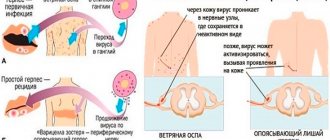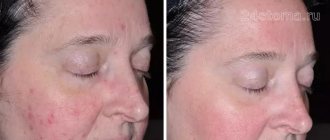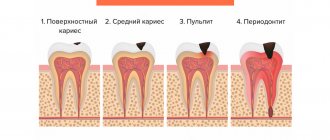- home
- About the clinic
- Helpful information
- Vulvovaginitis in children: causes, prevention, treatment.
>
>
>
One of the common reasons why a mother and baby turn to a pediatric gynecologist is vulvovaginitis.
Vaginitis is an inflammation of the vagina, vulvitis is an inflammation of the vulva or external genitalia, that is, the perineum, labia majora and minora. Since these areas are nearby, the disease often occurs together, which is why the name “vulvovaginitis” exists.
Causes of vulvitis
Against the background of severe viral infections, disruptions in the gastrointestinal tract and immunity, even a wet swimsuit or cold stool can cause vulvitis.
The development of vulvitis is provoked by:
- vegetoneurosis;
- tight clothes;
- increased sweating;
- synthetic pads and underwear;
- poor hygiene during menstruation;
- injury to the mucous membrane and skin in the pubic area;
- taking heavy antibiotics or a course of radiation therapy;
- constant humidity in the area of the external genitalia;
- maceration of the vulvar mucosa with secretions from the cervical canal or vagina;
- metabolic and hormonal dysfunctions: diabetes mellitus, vitamin deficiency, ovarian hypofunction, allergic reactions, obesity.
The risk of developing an inflammatory process is significantly increased by delicate mucous membranes, folds, and accumulation of blood vessels and nerve endings near the surface of the epidermis. In rare cases, vulvitis is diagnosed against the background of diphtheria, tuberculosis, or immunodeficiency.
Vulvitis is caused by the following infections and fungi:
- chlamydia;
- gonococci;
- helminths;
- Trichomonas;
- streptococci;
- staphylococci;
- coli;
- yeast fungi.
Expert advice
To reduce the risk of developing an inflammatory process, you need to know the rules of prevention: maintain personal hygiene, use underwear made from natural fabrics, and exclude casual sex. It is important to adhere to a healthy lifestyle, play sports and give up bad habits. Chronic foci of infection require mandatory treatment.
It is especially important to follow the rules of prevention during menopause and endocrine disorders. If the immune system is weakened, the body is more vulnerable to infections. It is advisable to find a way to stabilize the course of existing endocrine disorders so as not to provoke an inflammatory process.
Bani Odekh Elena Yurievna
Obstetrician-gynecologist, gynecologist-endocrinologist, ultrasound diagnostics doctor, Candidate of Medical Sciences Experience 23 years
Types of vulvitis
There are two types of the disease:
- primary vulvitis;
- secondary vulvitis.
If the cause of the development of the inflammatory process of the vulva is the organs of the reproductive and excretory system (bladder, tonsils, kidneys, vagina, uterus), secondary vulvitis is diagnosed. In this case, the main therapy should be aimed at the source of infection, and then at the treatment of the external genitalia. As a rule, secondary vulvitis occurs against the background of existing inflammation: cervicitis, endocervicitis, colpitis.
Primary vulvitis is common during the formation of the reproductive system, hormonal maturation, and postmenopause. This clinical picture of the disease is associated with the characteristics of the female reproductive system. In little girls with unformed local immunity, primary vulvitis often develops due to pinworms.
When the level of estrogen in women decreases (during menopause), atrophy and thinning of the vulvar mucosa occurs, the protective function decreases, and vaginal discharge decreases. Hormonal changes in the body can trigger the development of vulvitis.
In women of reproductive age with a healthy hormonal background, physiological microflora and Ph-secretion, primary vulvitis is unlikely; in rare cases, vulvovaginitis is diagnosed.
The main causes of inflammation of the external genitalia and vagina in children
Inflammation can occur for many reasons, the most common cause of vulvovaginitis is:
- Allergic reaction. The cause of the pathology is the abuse of certain foods (strong allergens are chocolate, citrus fruits, foods high in dyes, honey). Allergies can also be caused by medications, household chemicals, and synthetic underwear.
- Long-term treatment with antibiotics. It is no secret that antibiotics destroy not only pathogenic bacteria, but also beneficial microflora, which “populate” the vagina in large quantities. In this case, it is important, along with antibiotics, to take drugs to restore the microflora.
- Visiting public or private baths, saunas, swimming pools, swimming in polluted bodies of water. This is the most common cause of infection in young children. In addition, the child may be allergic to chlorine, which is used to disinfect pool water.
- Foreign body in the vagina. In learning about their bodies, babies often try to insert small objects into natural openings - the nose, ears, mouth and, sometimes, the vagina.
- Viral and infectious diseases. Vulvovaginitis can appear against the background of acute respiratory viral infections, influenza, measles, rubella, chicken pox and other diseases. In this case, specific treatment is not required; the disease that caused the pathology is treated.
- Worm infestation.
- General decrease in immunity and endocrine disorders.
An important role is played by the features of the anatomical and morphological structure of the vagina in pre-pubertal girls - the neutral environment of the vagina, the thinness of the mucous membrane, the proximity of the anus to the entrance to the vagina, which also contributes to the development of inflammation.
Signs of vulvitis
In gynecology, a distinction is made between chronic and acute forms of the disease. The photo of a patient with vulvitis clearly shows hyperemia, redness and modified mucous membrane.
Signs of acute vulvitis:
- swelling of the clitoris;
- itching and burning of the vulva;
- redness of the labia;
- enlargement of sebaceous glands;
- the appearance of ulcers and erosions;
- painful urination;
- roughness of the labia minora;
- bloody or serous-purulent discharge;
- damage to the inguinal folds (in rare cases);
- blisters with fluid (herpetic vulvitis);
- enlarged lymph nodes in the groin, sometimes an increase in temperature may be recorded;
- curdled, yellow-green or white discharge of a watery nature (if the cause of vulvitis is E. coli, staphylococcus).
Manifestations of chronic vulvitis:
- swelling of the vulva;
- itching and discharge;
- epithelial defects;
- hyperemia on the vulva;
- redness of mucous membranes;
- hypertrophy of the sebaceous glands.
Popular questions
I suspect inflammation and cysts.
The doctor prescribed IV thiosulfate, IM ceftriaxone, and Diclovit suppositories. I just didn’t explain, is it necessary to apply everything at the same time or what? Hello! Most often, this complex of treatment is carried out simultaneously, but it is better to check with your doctor.
Hello. My labia and clitoris are swollen, there is a burning sensation and a cheesy discharge with something in it, the color is unclear. What could it be and how to treat it? Before that I had inflammation and treatment, and after that it all started. Hello! This is how vulvovaginitis manifests itself. I recommend that you contact an obstetrician-gynecologist and conduct an examination to find out the cause of the inflammation. This will allow you to correctly prescribe therapy. At this stage, you can use Gynocomfort gel with tea tree oil, 1 dose once a day, which will limit the spread of inflammation and improve your well-being.
Hello! Severe itching on the labia, irritation. There is nothing to worry about in the vagina itself. What could it be?
Hello! This may result in an allergic reaction or inflammation. I recommend using Ginocomfort gel with mallow extract, applying it once a day to the discomfort zone for 7 days. If you do not notice relief, consult a doctor.
Good morning, I have vulvitis on my labia minora, I don’t know what to do or how to treat it.
Hello!
If inflammation occurs in the labia minora area, you can use Gynocomfort gel with tea tree oil. The gel is applied in a thin layer once a day for 1 week. If complaints persist, you should consult a specialist. For an accurate diagnosis, contact a specialist
Consequences of vulvitis
The acute form of vulvitis in children is accompanied by nervous excitability and sleep disturbances. If diagnosis and treatment are not timely, the disease develops into a relapsing chronic form.
As a result of vulvitis suffered by a girl at an early age, genital deformities develop and fusion of the labia minora (synechia) occurs. Untreated chronic inflammation can subsequently cause anorgasmia, miscarriages, and infertility.
If you experience similar symptoms, consult your doctor
. It is easier to prevent a disease than to deal with the consequences.
Complications
The inflammatory process causes a lot of inconvenience, but patients often ignore it: the disease does not seem dangerous. However, the advanced stage, the consequences of incorrect and inadequate treatment can lead to the transition of acute vulvitis to a chronic form. This increases the risk of developing severe complications.
In childhood, vulvitis often leads to the appearance of adhesions. Fusion occurs between the labia minora, and sometimes between the labia minora and the labia majora. If the inflammatory process is not noticed in time and measures are not taken, it can lead to various disorders of reproductive function, including infertility.
In case of endocrine disorders and diseases, as well as dysbacteriosis, vulvitis can cause complications:
- vulvovaginitis;
- vaginitis;
- candidal urethritis;
- acute and chronic cystitis;
- endometritis;
- cervicitis.
Each of these diseases also requires attention and compliance with medical infections. If the inflammatory process in one area is not treated in time, it can lead to the spread of infection to nearby organs and the reappearance of vulvitis.
Diagnosis of vulvitis
The diagnosis of vulvitis is made based on examination of the patient’s external genitalia. For an accurate diagnosis, the gynecologist uses a hand-held magnifying glass, conducts vaginal-abdominal and rectal examinations, takes a smear for cytology, and examines peripheral lymph nodes.
To identify the causes of the inflammatory process, additional diagnostics are required:
- Analysis of urine;
- vulvoscopy;
- HIV test, RW;
- general blood analysis;
- cultural sowing;
- bacterioscopy of smears;
- tests for helminths (feces or blood).
Prevention of inflammation of the labia
To prevent vulvitis, it is necessary, first of all, to maintain intimate hygiene. It is recommended to use products designed specifically for caring for intimate areas. Ginocomfort washing gels for intimate hygiene, which were developed by specialists of the pharmaceutical company VERTEX, taking into account the characteristics of the microflora of the genital organs, are well suited for this purpose. They do not dry out the mucous membrane and do not disturb the acid-base balance. These products have a package of necessary documents and quality certificates.
Other measures to prevent inflammatory processes in the labia area include the following:
- Proper drying of the genitals after hygiene procedures. It should be carried out with a clean towel or napkin in the direction from front to back or with gentle blotting movements.
- Careful selection of underwear. It is optimal if it is underwear made of natural and soft material that will not squeeze or rub the perineum.
- General maintenance of immunity, which will allow the body to independently fight infection and suppress the proliferation of pathogens.
Treatment of vulvitis
Complex therapy for inflammation of the external genitalia includes:
- drug correction;
- intravaginal irrigation and baths;
- supportive therapy (homeopathy, hormones, macroelements, vitamins, immunostimulants).
During treatment, women are advised to refrain from sexual intercourse, going to the pool and the beach, and are prohibited from using vaginal tampons and panty liners. If a bacterial source of vulvitis is identified (candidiasis, tuberculosis, gonorrhea, chlamydia, trichomonas fungus), appropriate medications are prescribed (injections, tablets, suppositories, creams).
In little girls, in most cases, inflammation of the labia is provoked by opportunistic microflora. The photo of vulvitis in children shows redness not only in the area of the external genitalia, but also inflammation in the inguinal folds, on the thighs and buttocks. The gynecologist prescribes local antibiotics in the form of ointments and baths with anti-inflammatory herbs (chamomile, calendula, string, eucalyptus).
To relieve symptoms of acute vulvitis, the following therapeutic methods are used:
- Ural Federal District;
- hydrocortisone ointment;
- anti-inflammatory suppositories;
- baths with herbs and potassium permanganate;
- compresses with Furacilin, lead water, eucalyptus infusion;
- irrigation of the external genitalia with potassium permanganate, boric acid solution;
- the use of powders with streptocide, camphor, folliculin, zinc oxide, talc, anesthesin.
If vulvitis is allergic, antihistamines and dietary supplements are prescribed.
How to treat vulvitis in girls
Vulvitis in girls must be treated with special care. Treatment begins immediately after the examination, since the child suffers greatly from the symptoms of the disease. Treatment for children should be comprehensive (general and local). Special powders and sitz baths with a pale pink solution of potassium permanganate, antibiotics, anthelmintics and vitamins are recommended.
Vulvitis during pregnancy
During pregnancy, the body begins to produce hormones that promote growth, fetal formation and a favorable course of pregnancy. All endocrine glands of the body are completely rebuilt: reproductive, thyroid, adrenal glands, pituitary gland. At the same time, the adrenal glands sharply increase the production of glucocorticoids and mineralocorticoids, which suppress the mother’s immunity to preserve the fetus.
The most common causes of vulvitis in pregnant women are yeast, E. coli, staphylococci and streptococci. In the first and second trimesters of pregnancy, candidal vulvitis, hyperpigmentation and striae formation are often diagnosed. The gynecologist must select the optimal therapy for the pregnant woman and a set of supportive procedures to prevent relapses. Untreated vulvitis can lead to infection of the fetus during passage through the birth canal.
Folk remedies for treating vulvitis
It should be noted that herbal infusions, plant juice and any homeopathic medicines are not able to cure vulvitis, which is caused by gonorrhea, trichomonas fungus, tuberculosis, herpes, staphylococcus or chlamydia. Folk remedies help only with the non-infectious nature of the disease.
Proven anti-inflammatory and immunostimulating agents:
- Kalina. A tablespoon of dried inflorescences is poured into a glass of water and kept in a steam bath for 8-10 minutes. The strained decoction should be taken three times a day, one tablespoon at a time.
- Stinging nettle. Young nettle leaf juice is taken one teaspoon three times a day.
- St. John's wort. A tablespoon of dried collection is poured with a glass of boiling water and left for 40-50 minutes. The decoction is filtered and drunk 50 ml three times a day.
- Wintergreen round-leaved. The succulent leaves of the plant are doused with boiling water, crushed and applied to the vulva for 5-10 minutes. Such phytoapplications are good at relieving itching, burning and hyperemia of the mucous membrane.
- Lungwort. Freshly squeezed juice of the leaves of the plant is diluted 50/50 with water and applications are made to the vulva twice a day. Lungwort has anti-inflammatory and antiseptic effects.
Treatment of the disease
Treatment of acute and chronic vulvitis in a child of any age consists of relieving unpleasant symptoms and eliminating the root cause of the disease. Depending on the nature of the pathology, the following are used:
- medications that act on infectious agents;
- painkillers and anti-inflammatory ointments that relieve swelling, burning and itching;
- sitz baths with medicinal ingredients;
- hygienic washing with antiseptic solutions;
- physiotherapeutic techniques.
In the case of allergic vulvitis, a thorough analysis of the child’s environment is carried out, possible allergens are identified and eliminated: diapers, clothes, detergents, food. To relieve symptoms and relieve itching, general and local antihistamines are prescribed.
Prevention of vulvitis
Girls should be taught to properly care for their genitals from birth. Regular washing with non-alkaline compounds, clean linen and proper hygiene of the child after using the toilet can prevent inflammatory and serious infectious diseases of the reproductive system.
The basis of prevention is compliance with three simple rules:
- underwear made from natural materials;
- healthy lifestyle;
- hygiene.
This article is posted for educational purposes only and does not constitute scientific material or professional medical advice.
Preventive actions
The basis for the prevention of vulvitis and other genitourinary diseases in girls is teaching children the rules of intimate safety and hygiene. Parents of children need to monitor:
- daily washing before bed and after defecation with warm, clean water using soap or other products no more than 3-4 times a week;
- timely change of diapers;
- wearing loose, non-tight clothing and underwear made from natural fabrics;
- providing girls with personal care products: towel, soap, washcloth;
- wearing panties or swimwear on the beach.
Adolescent girls also need to be told in a timely manner about the dangers of unprotected sexual relations.
If your daughter has symptoms of vulvitis, the pediatric gynecologists of the SM-Doctor clinic will conduct the most delicate examination and prescribe the necessary diagnostic procedures and treatment measures. Remember, the lack of timely treatment can cause the process to become chronic and cause ascending infection of the vagina, uterus, and bladder.
Depending on the nature of the pathology, the following are used:
- medications that act on infectious agents;
- painkillers and anti-inflammatory ointments that relieve swelling, burning and itching;
- sitz baths with medicinal ingredients;
- hygienic washing with antiseptic solutions;
- physiotherapeutic techniques.
In the case of allergic vulvitis, a thorough analysis of the child’s environment is carried out, possible allergens are identified and eliminated: diapers, clothes, detergents, food. To relieve symptoms and relieve itching, general and local antihistamines are prescribed.









